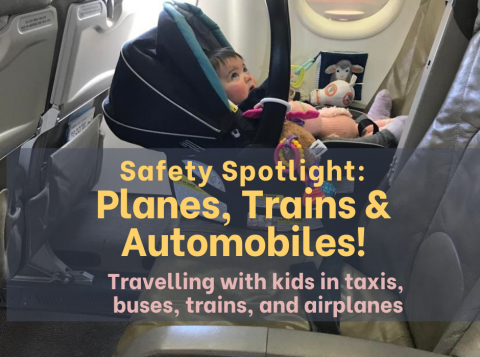Are you planning on taking a family trip this spring or summer? Whether you are travelling by road, railway, or air, here is what you need to know to keep your kids safe beyond the family vehicle.
Q: What are the basics of safely transporting your child when you are travelling?
We know that in Canada motor vehicle collisions are a leading cause of death to children. We also know that a properly used restraint system can reduce the risk of injury and death by up to by 71%. Car seats and booster seats save lives.
So first things first: always buckle your child up in the right car seat or booster seat on every ride in a car, truck, SUV or van – no exceptions. This includes taxis or ride-share vehicles, whether you are travelling far or closer to home.
Q: Can I bring my baby or child in a taxi without a car seat?
In Atlantic Canada, motor vehicle laws state that any child travelling in a car, truck, SUV or van has to be properly buckled into the right car seat or booster seat. Currently, there is an exemption to this law in New Brunswick, PEI and Nova Scotia. This means your taxi driver won’t get a ticket for the way your child is buckled up, however, this does not mean it is safe to transport your child in a taxi without a proper car seat or booster seat. Taxis have the same risk as any other passenger vehicle. The risk of your child getting hurt in a car crash in a taxi is the same as it is for any other car, truck or van. The safest way to travel with a child in a taxi is to have your child properly buckled into the right car seat or booster seat for their age and stage. There is no exemption in Newfoundland and Labrador and so taxi drivers will be aware that the right car seat or booster seat will be required.
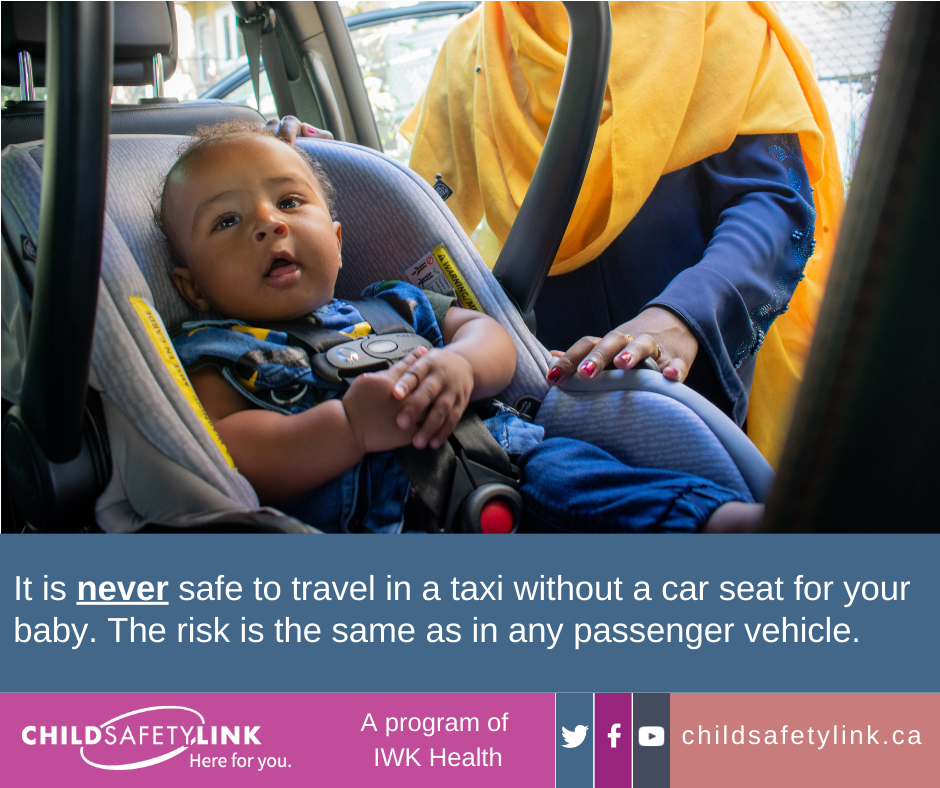
Q: Is it safe to take your child on a transit bus?
Yes, a public transit bus is a safe way to transport your child – no car seat required. Due to their size and visibility, transit buses are less likely to be involved in a crash. If a bus is involved in a crash, the large size helps to absorb the impact and reduces the risk of injury.
Q: Should I use a car seat on a transit bus?
Public transit buses are not equipped with seat belts, so you cannot (and do not need to) install a car seat for your child. Children can sit in their own seat or on a caregiver’s lap. Infants can be held using a baby carrier. Some busses will allow you to bring a stroller. If the child is allowed to travel in the stroller make they are properly buckled in and that you lock the wheels, otherwise fold the stroller, and store it safely.
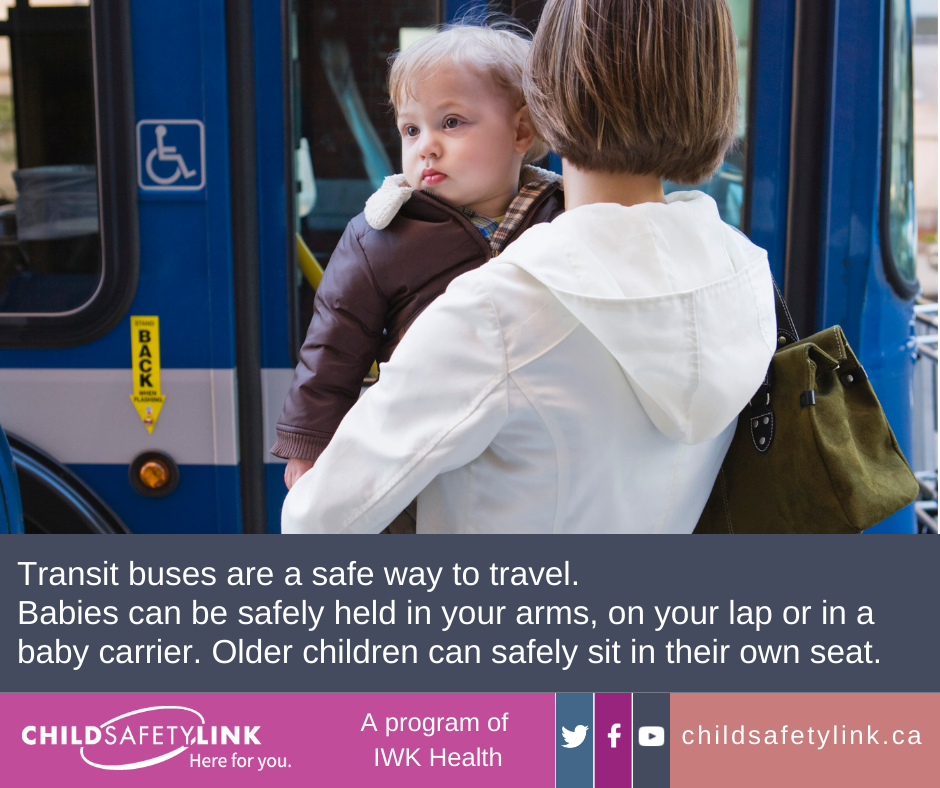
Q: What about a train? How can I safely transport my child on a train? Do I need a car seat on a train?
Like public transit buses, trains are a safe mode of transport due to their large size and visibility. There are no seat belts on a train and they are not needed. Trains travel on a well-marked track and when they come to a stop, they slow down over a longer time. Your child can safely sit on a caregiver’s lap or in their own seat. An infant can be held in your arms or your can use a baby wrap or other soft, wearable carrier. You can’t use a car seat on a train, but make sure you bring it for when you need to hop into a car or taxi once you arrive at your destination.
Q: Can I bring a stroller on a train?
For a child under the age of two, most trains will allow you to bring extra luggage like a diaper bag and stroller that does not count toward the carry-on limit. Make sure you check with your local train station to see if a stroller is allowed along with other luggage.
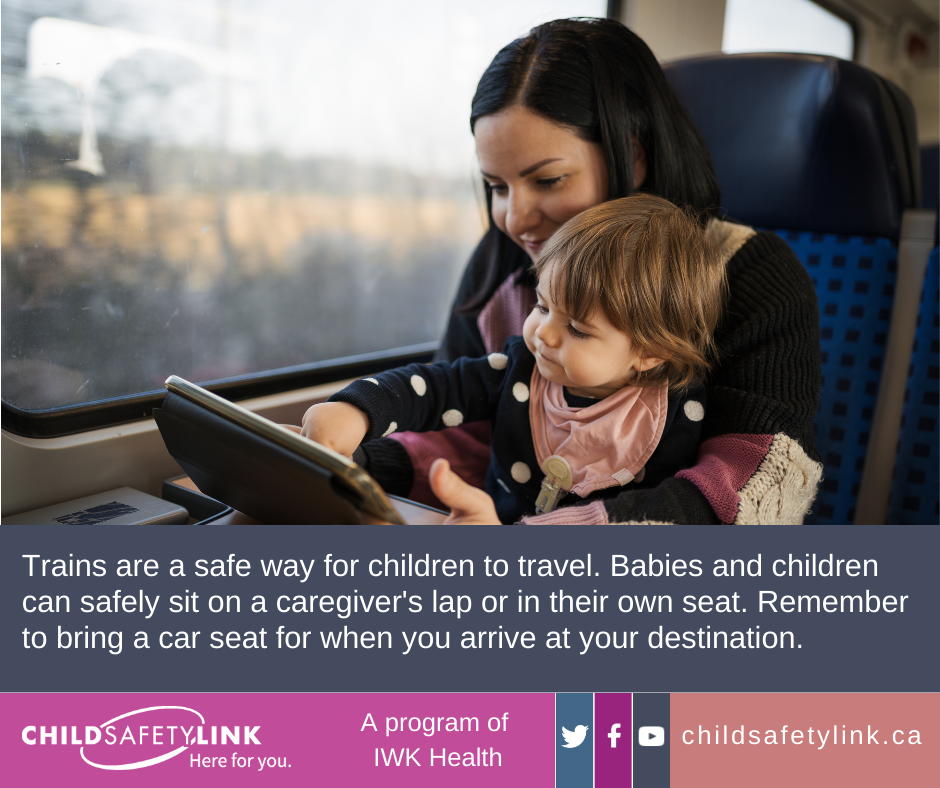
Q: Do I need a car seat when travelling with my child on a plane?
Although most airlines allow infants under age two to fly on a caregiver’s lap, the safest way for anyone to fly is securely buckled into their own seat. For babies and children under 40 pounds, this means they should be buckled into a car seat that is secured to the airplane seat. All car seats sold in Canada have instructions for how to safely install the seat for air travel.
Q: Can I use a booster seat on a plane?
No, booster seats are designed to be used with a lap and shoulder belt in a car. Since an aircraft only has a lap belt, booster seats cannot be used and will have to be safely stowed with other belongings so that your child can use it at your destination. Older children should use the lap belt on the plane.
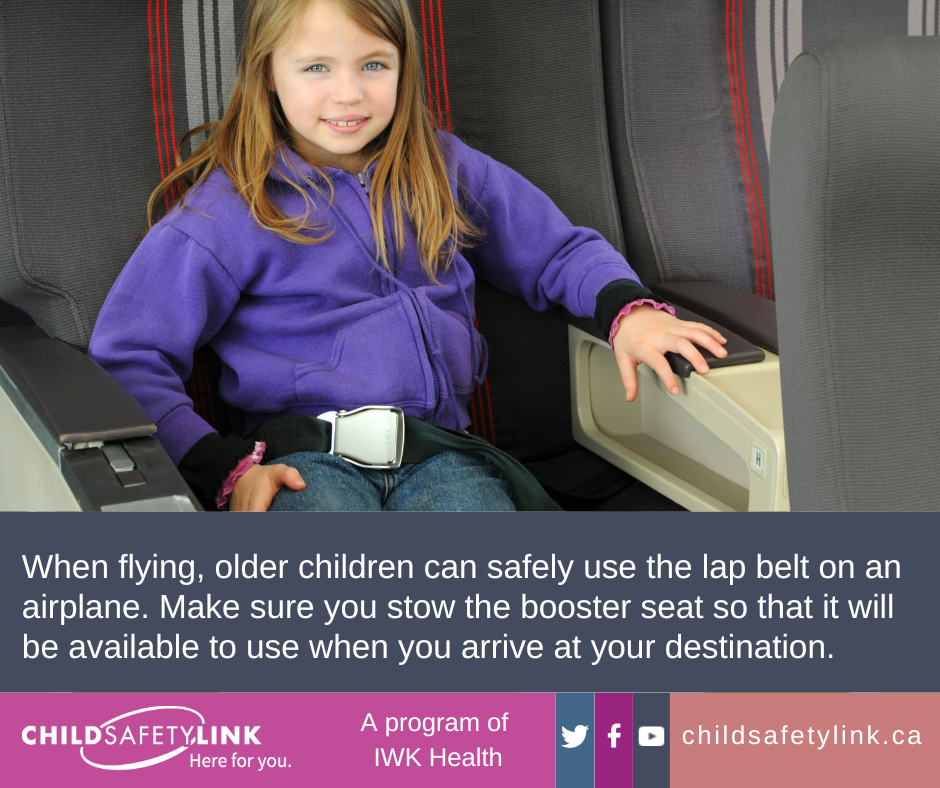
Q: Where can parents find more information?
Find more information about air travel here.
Find more information about RV safety here.
Find more information about car seat safety here.
